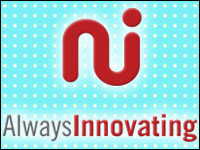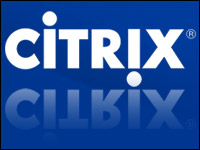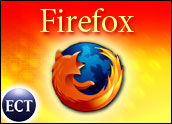
Technology moves at a lightning-fast pace. A brand new desktop computer has an average lifespan of two to five years, after which both its hardware and its software have become obsolete. For businesses and other organizations, this poses a significant challenge as they attempt to keep their IT purchasing budgets down while simultaneously trying to keep their infrastructures up to date.
Enter the thin client — either a repurposed desktop computer or a brand-new terminal device. It has a monitor, keyboard, mouse, CPU, CD-ROM and memory, but its hard drive has been removed. Instead of running a full operating system [OS] and applications directly from the hard drive, the OS and applications reside on a central server accessible to all these machines.
This server-centralized computing model allows organizations to support multiple users while offering significant energy and cost savings. Frugal-minded schools and businesses are increasingly deploying thin-client architectures and further maximizing their savings by opting for an open source Linux-based operating system over proprietary software.
“Linux makes sense in thin-client computing for a number of reasons. First, when you’re cutting costs on the hardware and resources required for thin clients, you probably don’t want to see savings eaten up by licensing costs for the [operating system]. Linux is free and now supports almost all of the user applications required in typical settings,” said Jay Lyman, an analyst with The 451 Group.
“Also, the same stability, flexibility and networking characteristics that make Linux a top choice for clustering and blade servers also make it ideal for centralized, thin-client computing,” he added.
Thinning Out
Large thin-client vendors such as HP and Wyse have long evangelized the benefits of thin-client computing at the desktop for its lower total cost of ownership (TCO) and streamlined administrative management and security, explained Benjamin Gray, a Forrester Research analyst.
Grounded in a traditional server-based computing model, thin client terminals work by simply providing users with a connection to applications and data hosted on a server. The benefits of shifting the deployment, management, support and execution of applications from a desktop to central server farms are easier administration and lower TCO over the long haul.
“Despite the potential savings associated with thin clients, many organizations were reluctant to embrace the concept during the 1990s because it required significant initial cost investments in back-end infrastructure technologies such as servers, storage and networking,” Gray continued.
Now, however, enterprises are taking a second look at thin clients. The change resulted from businesses looking more closely at management, security, TCO and energy consumption, according to Gray. In turn, IT departments have begun adjusting their agendas to make sure these items rank higher in the decision-making process.
Major drivers include concerns about the company’s environmental impact and a desire by organizations to go green.
“Since most IT professionals indicate that they plan to include environmental concerns — such as energy efficiency and recycling — in their IT operations planning, a shift in desktop hardware sourcing aligned to environmental effects deserves further examination,” Gray told LinuxInsider.
Thin clients, absent the hard drives and expansion slots, draw less power and require components that are environmentally friendlier than traditional desktops.
“Thin-client hardware consumes probably 20 to 25 percent the power that a normal desktop consumes,” Mark Margevicius, an analyst at Gartner, told LinuxInsider.
Less Stress
Because thin clients are frequently older machines with processors that are not up to the demands of current operating systems and software, integrating them into a centralized architecture lessens potential downtime during software updates or malfunctions.
“This gives you quite a few advantages because it means when you’re doing an update, if you’ve got 25 machines on a central server, you do the installation there and the next time somebody reboots one of their client machines it captures a fresh image with all the new software on it,” said Richard Weideman, Education Program Manager for Canonical.
“You don’t have to go around to each machine and do updates. It also means if something breaks on one of the machines, you take it off the network, put a replacement machine in, and when you boot up again everything is there available again because processing happens on that central machine. If a user was halfway through working on a document, that was stored on the central machine. There’s no problem with local hard drives and trying to move the data,” he explained.
The benefits of thin-client architecture have made it the increasing choice of schools and school systems, Weideman told LinuxInsider
Linux Gets Thin
The cost savings associated with a thin client deployment increase when Linux-based software, which is free, is thrown into the mix.
The Linux Terminal Server Project, an add-on package, allows many people to simultaneously use the software. The technology has grown increasingly popular among schools. For instance, the Macedonian Ministry of Education and Science recently deployed 180,000 workstations running Canonical’s Ubuntu Desktop software as part of its Computer for Every Child Initiave. The OS runs on 160,000 virtual PC terminals and 20,000 PCs.
Linux now supports almost all of the user applications the typical business or other organization requires, explained The 451 Group’s Lyman. In addition, new technologies such as virtualization and cross-OS support from vendors are also making Linux more acceptable in enterprise and small- to medium-sized business deployments.
“As management of clients moves from the help desk to the data center, Linux is now better able to support Windows and its applications and vice-versa. This will reinforce the prominence of Linux in thin-client computing, but it also highlights how the vast majority of environments will continue to have a mix of operating system,” he told LinuxInsider.
Open source Linux software is an extremely attractive operating system for thin clients because the terminal essentially just serves up a Web browser, Forrester’s Gray told LinuxInsider
“There is limited need for the full Windows experience because the data and applications reside in the data center, and the terminal is running a limited set of applications for its task-based workers,” he pointed out.
All About the Benjamins
The popularity of Linux on thin client devices is largely due to their low cost, explained Gartner’s Margevicius. That’s largely the case in emerging markets and parts of the world where there is not a heavy dependency on Windows. Users that need to run thick function applications — such as a mainframe emulation program, green screening and 50 to 50 emulation where Windows does not supply the requisite functionality — can also benefit.
“We have seen thin client devices running Linux for as low as US$199 at an introductory price,” he told LinuxInsider.
“It’s easy to say that $300, $350 is where you can find these devices. Customers tell us they like it because of the price point. For enterprise customers doing large deployments, price does matter,” Margevicius added.
The numbers add evidence to the software’s increasing desirability. Linux-based software providers had a 27.2 percent share of the thin-client software market, according to Bob O’Donnell, an IDC analyst.
“That’s pretty high comparatively speaking. That because Linux is typically cheaper, and the issues you run into that prevent Linux [from being] a major factor on a traditional desktop — i.e. application and driver support — don’t exist with thin clients. You don’t have drivers because you’re not plugging anything in but a monitor, keyboard and mouse, and the applications themselves typically don’t run on the client, they run on the server,” he told LinuxInsider.
The “gotchas” for a Linux on a desktop go away and the benefits of Linux — including the cost benefits — become clearer, O’Donnell continued.
“You can get two thin clients, one with Windows XP and Linux embedded. It’s the same hardware, but the Linux one is going to be cheaper. Depending on your environment, that may be just fine,” he added.




















































This was a good article in spring 2008 and it still is useful nearly a year later but the recession that took hold at the end of 2008 may well require a follow-up.
In the recession, the low-end netbook is thriving while the notebook has slowed and the desktop PC is declining. Thin clients and netbooks are very similar so I expect thin clients are thriving, too.
At the low end thin clients can be had for as little as $85 (slow CPU, small RAM). With the ability to buy a netbook for $99 these days, thin client prices are under pressure. Expect the cost of acquisition to decline in 2009. The same technology that permits netbooks to use so little power and the quad-core CPU to be so powerful can be turned to produce single-chip motherboards for thin clients that use very little power. AMD has been reluctant to jump on the netbook bandwagon and they have not produced a CPU designed for netbooks/thin clients but have instead produced a mid-range CPU. Intel has produced the Atom but do not want to antagonize OEMs who consume millions of high-powered chips. The downturn changes everything. Everyone must look to produce volumes of low-cost equipment.
Expect 2009 to be an excellent year for thin clients as many industries try to cut costs and Vista/Vista II do not satisfy the need for low-cost computing on clients as well as GNU/Linux on thin clients.
This market has regional variation. The netbook was hot in EMEA but cool in USA. Thin clients will follow the same pattern. Emerging markets and those not locked-in to one licence fee/one hard drive per seat will be early adopters. Those using web applications extensively are also candidates for thin clients. If you do not need a local hard drive why not use these huge hard drives on the server instead? Everything is coming together to make thin client computing the coming standard for the static desktop.